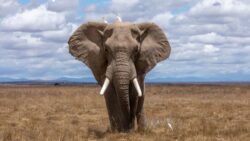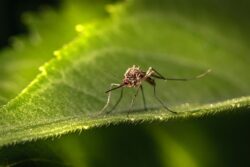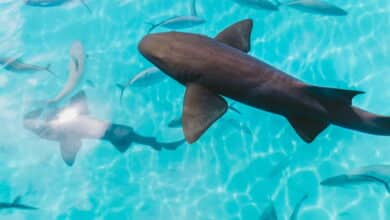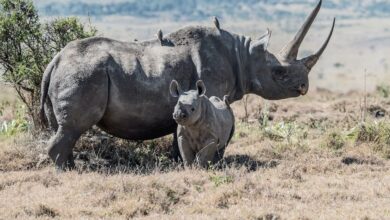What Was The Deadliest Animal In Africa?
It is estimated that about 30 million people travel to Africa every year. Africa is the best place in the world to go on safari. For most individuals, a safari is at the top of their list of must-do vacations because of the thrill of seeing wild creatures in their own environments.
The Serengeti in Tanzania, the Masaai Mara in Kenya, Kruger in South Africa, Chobe in Botswana, Hwange in Zimbabwe, and the Zambezi in Zambia are just a few of the many wonderful national parks that can be found across the continent.
But, being exposed to wild creatures with no protection from the elements begs the question: which species offer the most threat? And, in general, how risky are safaris?
Let’s take a look at the top eight deadliest African creatures.
Mosquito
One of the tiniest African animals is also one of the deadliest. The little mosquito is likely the most lethal animal in Africa.
More than 70 million individuals are infected annually by mosquitoes in Africa, many of whom carry potentially deadly illnesses such as yellow fever, the Zika virus, the West Nile virus, dengue fever, and malaria.
Malaria, one of the world’s worst illnesses, is the biggest danger posed by mosquitoes to safari-goers. The female Anopheles mosquito, which spreads malaria, is most active between the hours of dawn and twilight.
Wearing light-colored clothes and sleeping beneath a mosquito net are easy ways to ward against mosquito bites in addition to using a spray or cream repellent.
You should also get prescriptions from your doctor for any necessary medications you’ll need before, during, and after your safari. (A vaccine against malaria is also in the works; its introduction might potentially cut mortality rates by 75%.)
Snake
Africa is home to about half the world’s estimated 3,500 snake species. Dangerous species include the black mamba, spitting cobra, and puff adder, among many more.
Around 5.4 million people are bitten by snakes annually, with 1.8–2.7 million becoming envenomated (poisoning from snake bites). Paralysis, abnormal bleeding, organ failure, and tissue degradation are only some of the life-threatening consequences of a venomous snake bite.
Between 81,000 to 138,000, people lose their lives annually due to snake bites.
The black mamba is the most dangerous species of snake in Africa. It may grow up to 14 feet in length, making it the country’s biggest poisonous reptile. Its venom is quite poisonous. Ten men can be killed by the poison in only one bite from a black mamba.
The Puff Adder is another potentially lethal snake species native to Africa. Because to its widespread distribution from Sub-Saharan Africa to the Arabian peninsula, this snake is responsible for more deaths than any other snake on the continent.
Puff adders are nocturnal and solitary and rely on their camouflage to be safe in the wild. Accidental stepping on them is the leading cause of bites.
In Africa, travelers hardly seldom come into contact with snakes. Most snake bites and fatalities happen in rural regions where medical assistance is scarce.
Hippopotamus
Hippopotamuses are fascinating to see from afar, but don’t let their docility fool you. Hippopotamuses are the most hazardous land creatures in Africa, notwithstanding their vegetarianism.
Both male and female hippos are known for their ferocious territorial defense, especially if their young are threatened.
Keep your distance from these massive creatures; a male hippo may weigh over 3,300 pounds and have canine teeth that measure over 20 inches in length. Hippos can run at speeds of over 19 miles per hour on land.
Having had numerous close calls with hippos when canoeing on the Zambezi River, I have a healthy regard for these animals.
Nile Crocodile
The Nile crocodile is an aquatic predator with specialized adaptations. It may grow to be 20 feet in length and weigh up to 1,650 pounds, making it the heaviest and longest freshwater reptile in Africa.
The Greek term krokodeilos, from which we get the English word “crocodile,” meaning “pebble worm.”
A kroko is a little pebble in Greek, while a deilos is a worm or a man. The term comes from the crocodiles’ scaly appearance.
Crocodiles are ambush predators, meaning they wait in ambush for their victims to approach. They lay in wait near the water for up to two hours without breathing. They ambush their prey by leaping forward and grabbing them with their powerful jaws and fangs.
They have little trouble taking down and feasting on huge prey like antelope, buffalo, or even big cats. Yet fish is a staple of their diet.
Attacks on people tend to happen in areas where residents rely heavily on waterways. According to various estimates, crocodiles murder between 300 and 1,000 humans annually.
When on safari, you can come upon a Nile crocodile lazing about with its mouth wide open. The crocodile’s body heat causes it to act in this way.
African Elephant
Elephants, the biggest terrestrial animal on Earth, are notoriously difficult to anticipate. Males, especially older bulls and younger, inexperienced males, can be hostile without provocation (usually during musth, their sexually active period, when testosterone levels increase). 
Mothers with newborn kids should also be avoided, since these creatures, like humans, would do anything to defend their young.
An elephant’s massive size provides it a distinct edge in any physical confrontation. Trampling and crushing are the leading causes of death when it comes to human encounters with elephants.
It’s important to note that poachers kill over 100 elephants every day and that in regions where poaching is common, elephants become considerably more hostile.
Cape Buffalo
The Cape buffalo is one of Africa’s deadliest animals, earning it nicknames like “widowmaker” and “the black death.”
When hunting for Africa’s “big five” was more common, it was common knowledge that the buffalo was the animal responsible for the deaths of most African hunters.
Reportedly, they now demand payments from thousands of individuals per year and murder around 200 of them. Its massive, curving horns may inflict severe damage if they come crashing down on you out of nowhere.
Buffalo are social animals that congregate in large mixed herds, sometimes numbering in the hundreds. They may reach a shoulder height of 6 feet and a weight of up to 2,000 pounds.
Large predators seldom attack fully developed adults. Even for a pack of lions, killing an animal of this size and strength is a very risky endeavor. Furthermore, herds will form a wall of horns to protect themselves from predators.
Large populations of Cape buffalo may be found in both East and Southern Africa, although these enormous mammals can be found all throughout the savannahs of sub-Saharan Africa.
Lion
While it is one of the world’s most feared predators, lions typically avoid attacking humans unless they feel threatened. Even yet, there are situations where they would.
At least ten individuals every year are killed by lions while trying to cross Kruger National Park in South Africa from Mozambique. It is estimated that lions murder as many as 70 people annually in Tanzania.
The most well-known assault by man-eating lions occurred in 1898, when a pride of two males terrorized railway employees in Kenya and Uganda, murdering more than a hundred over the course of nine months.
Few cases of safari-goers (or their guides) being murdered by lions are known to have occurred. People living outside of African game reserves make up the great bulk of lion prey.
Rhinoceros
Rhinoceroses, more often known as rhinos, are the world’s second-largest terrestrial mammal. They are easily recognizable by the dramatic, pointed horns protruding from their muzzles. In fact, “nose horn” is the Greek origin of the word “rhinoceros.” Its thick, armor-like skin makes them look like barrels.
While many animals suffer from impaired vision, rhinos have some of the poorest eyesight in the world. It’s been stated that at distances more than 15 feet, they have trouble telling us apart from trees. They do this by using their acute hearing and olfactory senses.
While rhino attacks are uncommon, they do happen. Angry rhinos who have been challenged or endangered assault safari cars every year. Nonetheless, they seldom attack people, with just a handful of attacks documented per year.
Only during mating season can male rhinos interact with females. Crashing is when a mother and her young gather together. Rhinos are entirely plant-based eaters.
Today, the world still supports five distinct species of rhinoceros: the white rhinoceros, the black rhinoceros, the Indian rhinoceros, the Javan rhinoceros, and the Sumatran rhinoceros. Only the white rhinoceros and the black rhinoceros call Africa home. There is no safe population size for any rhinoceros species.
Conclusion
You might be concerned about how people on a safari can get so near to dangerous creatures without getting hurt. There is obviously danger involved. Animals have a tendency to surprise us. Yet the key to survival is not looking like a threat or a meal.
Keep in mind that animals in safari areas are used to seeing people and cars. The animals do not recognize each passenger as an independent being. They see the vehicle not as a predator but as prey itself. Your Land Cruiser, like a tree, will blend into the scenery and be left alone.
Your tour guides have extensive knowledge of animal habits. It’s essential that you follow your guide’s instructions. Sometimes he’ll ask you to be quiet, sit down, or stop what you’re doing.
The goal of these directives is to keep the animal from charging, keep it from being irritated by your presence, and keep you from interfering with its natural behavior.





